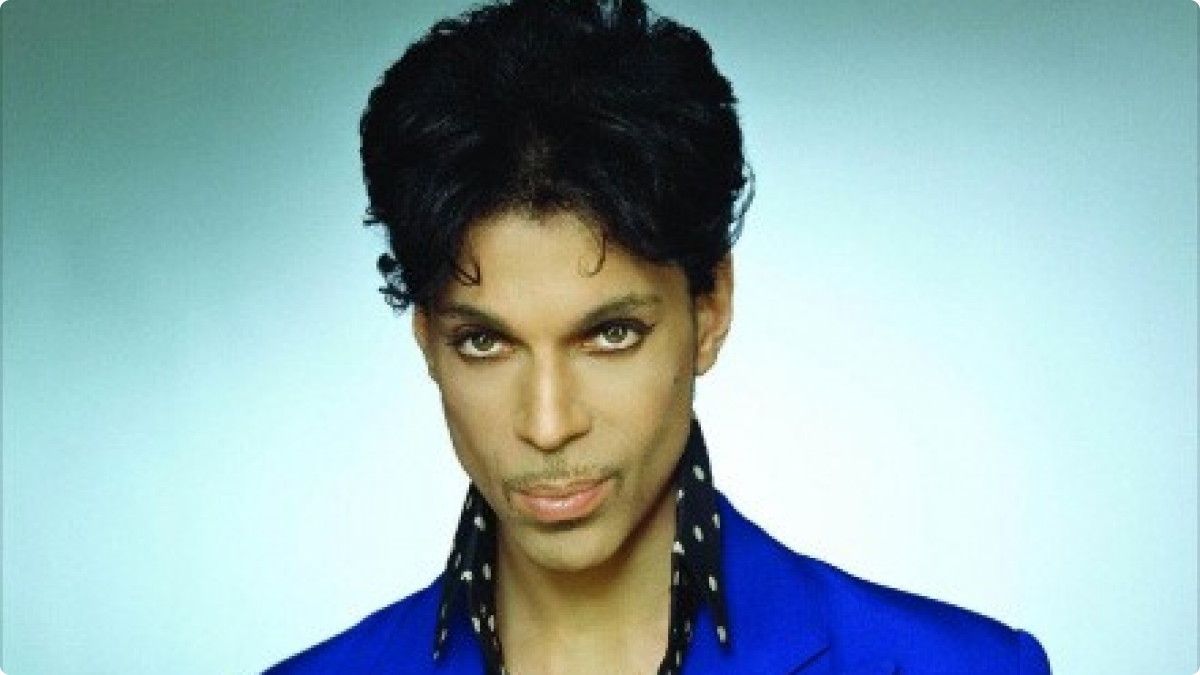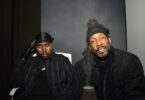- The Prince of Paisley Park - April 26, 2016
- Gingger Shankar’s Nari (Part 1) - April 6, 2016
- Band Spotlight: Last Second Drop - July 7, 2014
The Prince of Paisley Park
“Dig if you will the picture…”
I was 6 years old and there he was on my TV. A tiny scrawny half naked shrieking black man in full makeup. I didn’t know what I was watching. I didn’t know why I was watching it (neither did my parents). What I knew was that it was unlike anything I had seen before. It was my first Prince (born Prince Rogers Nelson June 7, 1958) experience but certainly not the last as “When Doves Cry” reigned supreme over MTV and radio stations across the world in 1984. Prince’s catalogue and his videos would continue to do so for decades to come.
We all have our own Prince stories and in the end that is the beauty of music. You have to take time out of your schedule to see a movie or a Broadway show or even go to an art gallery, but music finds us in the most organic and precious moments of our lives. It remains a medium through which we can cherish and even revisit those moments years later. In what way was Prince a part of your life’s soundtrack? I’ll take this opportunity to briefly touch on mine.
In my formative years his “1999” and “Purple Rain” albums were ever present. Back then we used to debate who was better, Prince, Michael Jackson, or Madonna. Musically, it was a great time to be alive. Purple Rain went on to be a hit motion picture, album, and cultural phenomenon, which at one point simultaneously delivered Prince the #1 album, single, and movie. Prince would even go on to win the 1984 Academy Award for the film’s soundtrack. There wasn’t anything Prince couldn’t do.
Then there was his 1989 “Batman” soundtrack. Originally, the Batman album was supposed to be a collaboration between Prince and Michael Jackson but unfortunately for us fans, that plan didn’t work out. Nonetheless, the album topped the charts for 6 straight weeks; selling over 11 million copies. “Batdance” remains one of Prince’s most iconic music videos and the song would go on to be Prince’s 4th number one hit of his career.
In between the two there was a lot of great music and a transcendent androgynous style that took over the 80s. Prince created his own sound and was a fashion icon. He was one of a kind. Behind all of that style was a tremendously talented musician who was credited for playing 27 instruments on his debut album.
By the time High School rolled around for me, amidst all the grunge (think Nirvana) and new wave (think Erasure and Depeche Mode), Prince reinvented himself with the New Power Generation. “Diamonds and Pearls” remains one of my favorite Prince albums to this day. While it is not as legendary as “1999” and “Purple Rain,” it was fresh funky sexy, and led to one of Prince’s most memorable moments when he mooned the audience at the 1991 VMA’s in assless yellow pants. “Cream” off of Diamonds and Pearls would be Prince’s final #1 hit.
In 1992 Prince released his 14th studio album under his new symbolic moniker, which he referred to as a love symbol. “7” was by far my favorite song from that album. My friends and I would sit and listen to it on repeat and wonder what the song meant. The song’s video featured Mayte Jannell Garcia who would become Prince’s wife in 1996. Prince wrote “the Most Beautiful Girl in the World” for Mayte in 1994.
“7” and “the Most Beautiful Girl in the World” marked an end of a Prince era, in my opinion. Music was changing and with the prevalence of hip hop, rap, and pop, Prince became a less prominent figure on television and radio. In fact, of Prince’s 40 biggest chart topping hits of all time, only 2 were released after 1995 and both are in the bottom three on this list. Though Prince’s career atop the charts effectively came to an end around this time, his legend as a concert performer was only growing. Prince would tour till his dying days, and while he is most remembered for his music from the 80s and 90s, he is perhaps most cherished by his fans for his live performances of the 2000s, including the Super Bowl, performing with artists like Beyoncé, and when he kicked Kim Kardashian off the stage at Madison Square Garden in 2011.
“Don’t have to be rich to by my girl…”
Prince loved women. Some may call him a player, some a feminist, but what’s undeniable is that he nurtured female artists in a way that will not be forgotten. Look at his work with Sheila E, Sheena Easton, Apollonia, Vanity, the Bangles, Janelle Monae, Carmen Electra, Alicia Keys, Wendy and Lisa, Tamar, Diamond and Pearl, Judith Hill, 3rdeyegirl, Taja Sevelle, and Bria Valente.
Prince’s musical influence was ever present in the 80s. During the juggernaut that was “Purple Rain” Prince wrote “Manic Monday” for the Apollonia 6. The song would go on to be the Bangles’ first hit in 1986. At the same time, Prince wrote and produced Sheila E’s hit songs “Glamourous Life” and “Love Bazaar.” Chaka Khan’s rendition of “I Feel for You” scored a song writing Grammy for Prince in 1985. In 1987 Prince and Sheena Easton’s “U Got the Look” peaked at #2 on the charts.
His musical mentorship was not only saved for the fairer sex, however. I knew the names the Revolution, Morris Day, the Time, and the New Power Generation only because of Prince. Prince also helped launch artists like Tevin Campbell whose song “Round and Round” he wrote, produced and featured on the “Graffiti Bridge” soundtrack.
Unintentionally, Prince also gave us one of the biggest hit of 1990s in Sinead O’Connor’s “Nothing Compares 2 U.” The song was actually written, composed, and released in 1985 by Prince for his funk band, “The Family.” Sinead O’Connor’s rendition was made without Prince’s involvement, however, and their relationship was volatile to say the least though her rendition went on to be a smash hit.
“Could you be, the most beautiful girl…”
Prince was romantically linked to many of his protégés including Sheila E, Carmen Electra, and Mayte. Prince was engaged to Sheila E and to Susannah Melvoin, who was the joint lead vocalist of his funk band the Family. Prince wrote “Nothing Compares 2 U” about Melvoin. But it was Mayte Jannell Garcia that ultimately stole Prince’s heart. They were married on Valentine’s Day in 1996. What you may not know is that the couple had a son, Boy Gregory. Tragically, he died a week after he was born. Soon after, Garcia suffered a miscarriage of her second pregnancy. The loss of both babies was too much for the marriage, and the couple divorced in 2000 after their marriage was annulled in 1999. In 2001, Prince married Manuela Testolini; she filed for divorce in 2006.
While the world knew Prince as a musical god, I can’t help but now think of him as a man who felt the pain of losing two children before he ever really got to be a father.
“Thoughts of pretty you and me, erotic city come alive…”
Allow me to shift from love to sex for a moment, if I may. There was perhaps no artist in the 80s and 90s who was both as popular and as overtly sexual as Prince (Madonna comes a close 2nd). “Erotic City,” “Darling Nikki,” “Cream,” “Get Off,” are just examples of some of Prince’s steamy songs. In fact it is because of “Darling Nikki” that Tipper Gore led the effort that eventually resulted in the music industry’s 30 year old Parental Advisory Label. As an artist Prince’s music was a mixture of Rick James, James Brown, Elvis Presley, George Clinton, Marvin Gaye combined, topped off with the sexuality of Marilyn Monroe. However, in 2001 Prince became a Jehovah’s Witness and embraced his faith. In doing so, Prince stopped playing his more sexually explicit songs from that point on.
“My name is Prince…”
Prince not only led to the Parental Advisory Label, but he also changed the way artists dealt with their labels and distributed their music. In 1993, Prince butted heads with his label Warner Bros. for their mass commercialization of his work and their trademark of his name. He compared his contract to slavery and changed his name in protest. The contract expired in 2000 and he changed his name back. Along the way, Prince won a Webby for “visionary use of the Internet to distribute music” and was called “one of the greatest music business innovators of the last century.”
“Breakfast can wait…”
I cannot write a tribute to Prince without mentioning one of my favorite Chappelle Show skits. Charlie Murphy’s story of playing basketball at Prince’s house with Chappelle playing the role of Prince in the skit is beyond words. The words “Game. Blouses” makes me laugh to this day. The best part is it was true. It was all true. Prince could really hoop, and he really did beat Charlie Murphy’s team that night. Prince not only had skills on the court, but a great sense of humor as well. In 2013 Prince released a song entitled “Breakfast can Wait” with a picture of Chappelle dressed as Prince with a plate of pancakes as the cover art for the single. Now that is funny. The 2004 skit was not only comedy gold, but it also reintroduced Prince to a whole new audience who were too young to recall his dominance of the 80s. As the Chappelle Show still airs reruns on Comedy Central Prince along with his love of both basketball and pancakes will continue to live on.
“Like a prayer…”
In 1989 Prince appeared on Madonna’s hit album “Like a Prayer.” He co-wrote and sang on “Love Song” and played guitar on 3 other songs including the smash single “Like a Prayer.” The words of faith would prove to be more than just lyrics in Prince’s life as he later found religion as a Jehovah’s Witness, which played a significant role throughout the remainder of his life. It is reported that because of his faith, Prince took no credit for his tremendous humanitarian efforts. After his passing, Prince’s friends have given us a glimpse into Prince the philanthropist, humanitarian, and community activist.
Being a Jehovah’s Witness is also reported to be the reason why Prince would not undergo a double hip replacement surgery in 2009. His hip pain may have contributed to his use and possible abuse of pain killers such as Percocet.
“Dearly beloved, we are gathered here…”
On April 21, 2016 Prince Rogers Nelson passed away at the age of 57 at his Paisley Park recording studio and home in Chanhassen Minnesota. To write those words is still surreal. Stuart Scott once said “Life consists of two dates with a dash in between. Make that dash count.” No one can argue that Prince did not squeeze every drop of marrow out of his dash.
In 1947 Dylan Thomas wrote, “do not go gentle into that good night, rage, rage against the dying of the light.” 37 years later, Prince echoed this sentiment when he sang “and if the elevator tries to bring you down, go crazy…” It’s how he lived. His music, style, androgyny, films, fight for artists’ rights, concerts, innovations in music distribution, humanitarian efforts, philanthropic endeavors, religious beliefs, were all a part of how he raged against the dying of the light. Prince played his final performance on April 14, 2016 in Atlanta. You can hear his final performance here. There are rumors that Prince has a large private vault of 26 albums worth of unreleased music. We can only hope to continue to be treated with his musical genius for years to come as this previously unreleased catalogue becomes available.
For many of us Prince played a role in the soundtrack of our lives. On behalf of his fans, we honor the man’s legacy as the artists’ artist. RIP Prince Rogers Nelson. We only want to see you laughing in that purple rain.








